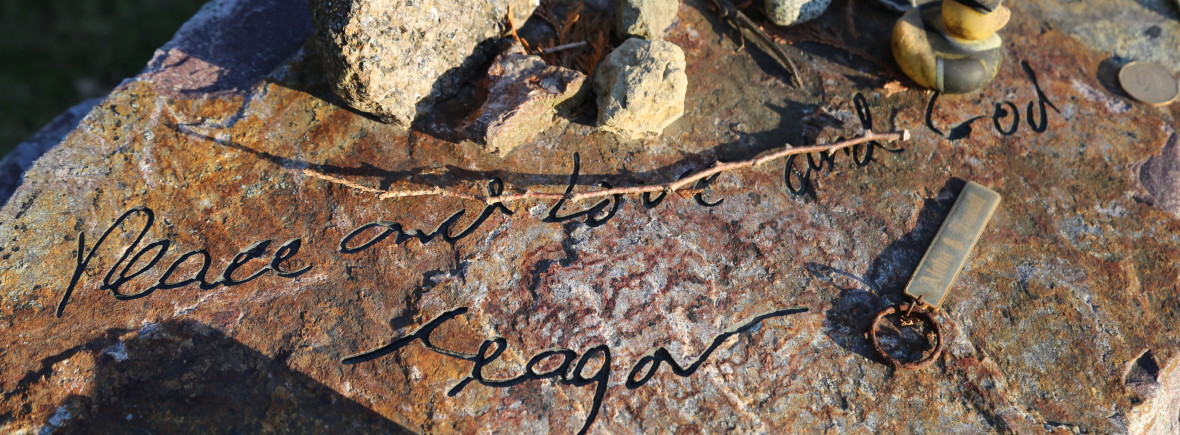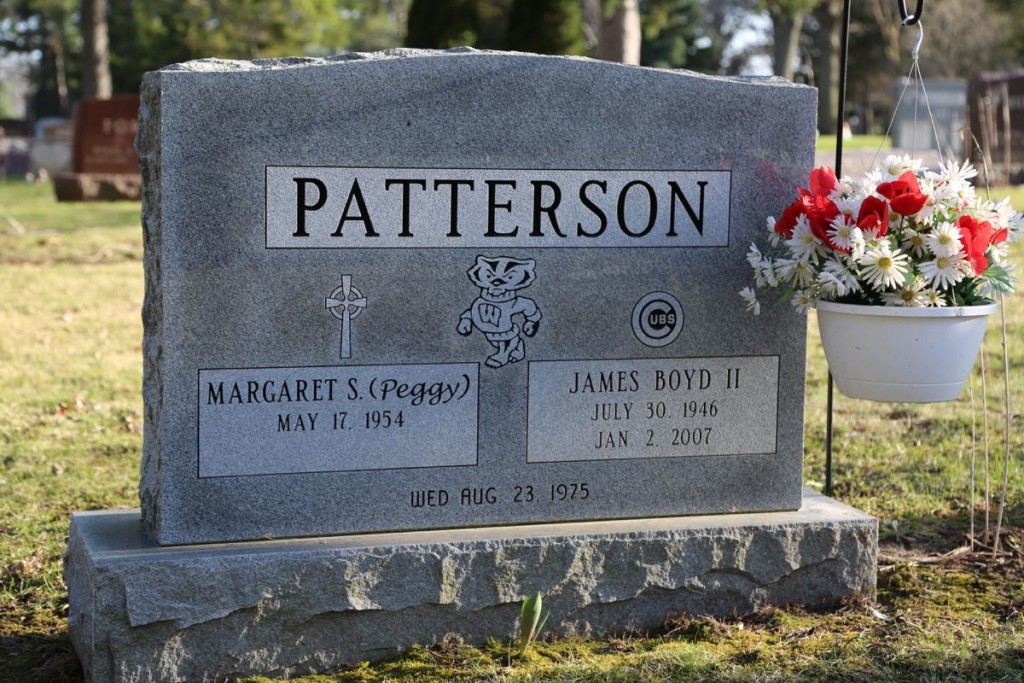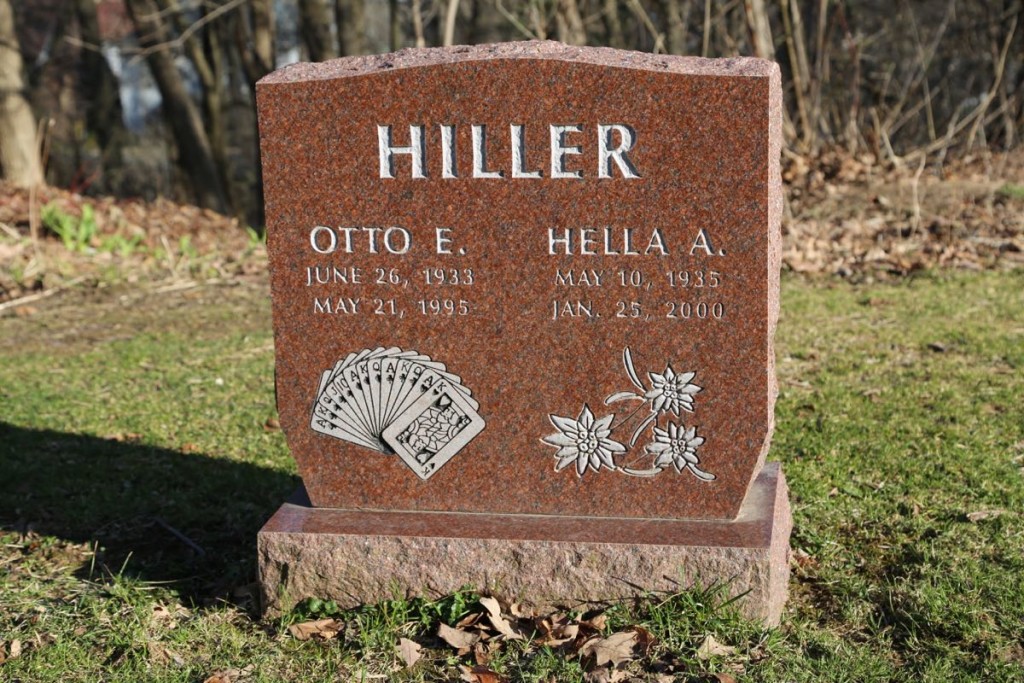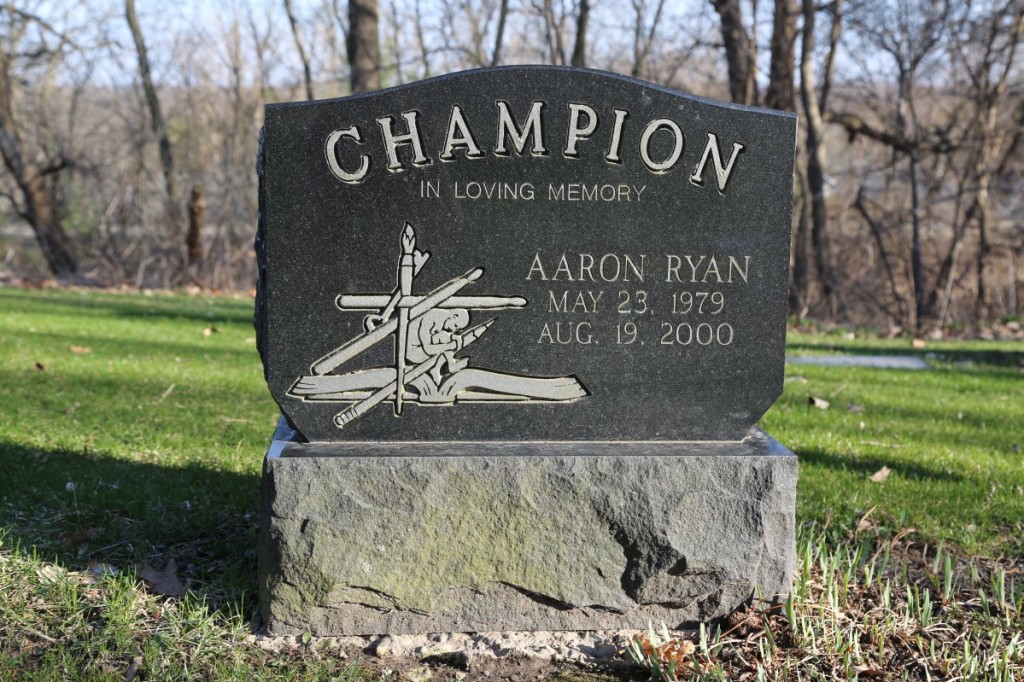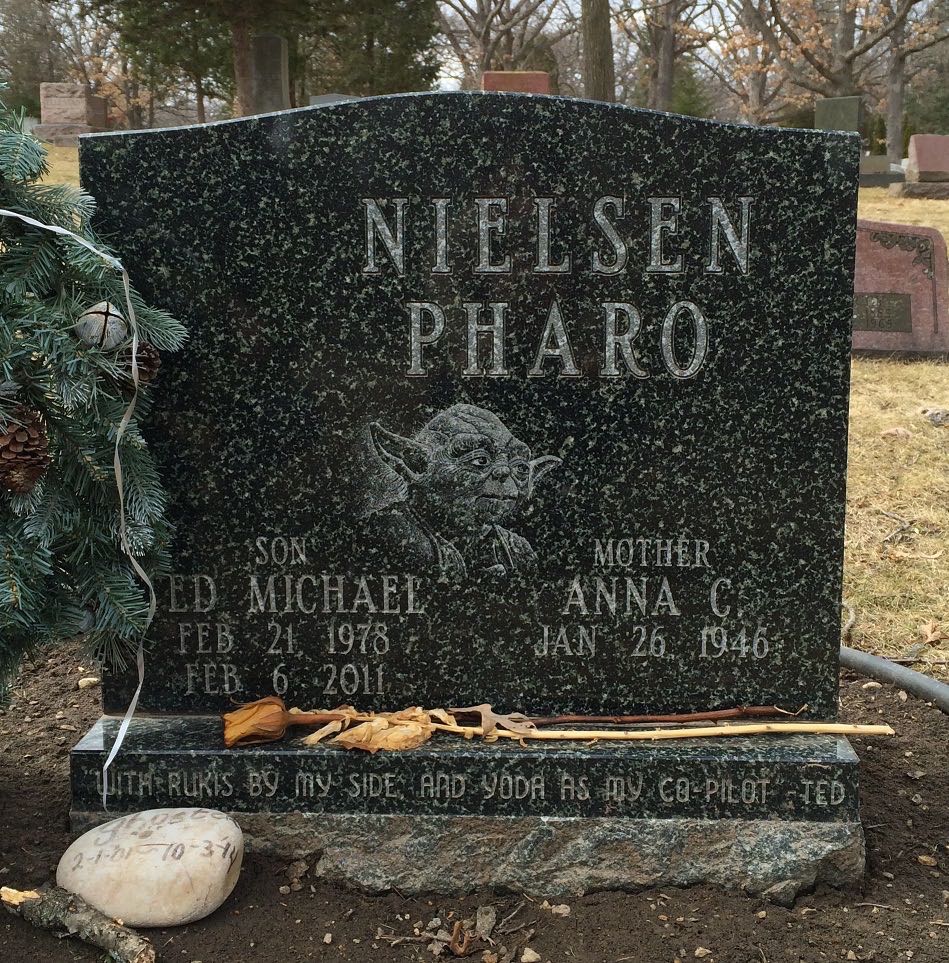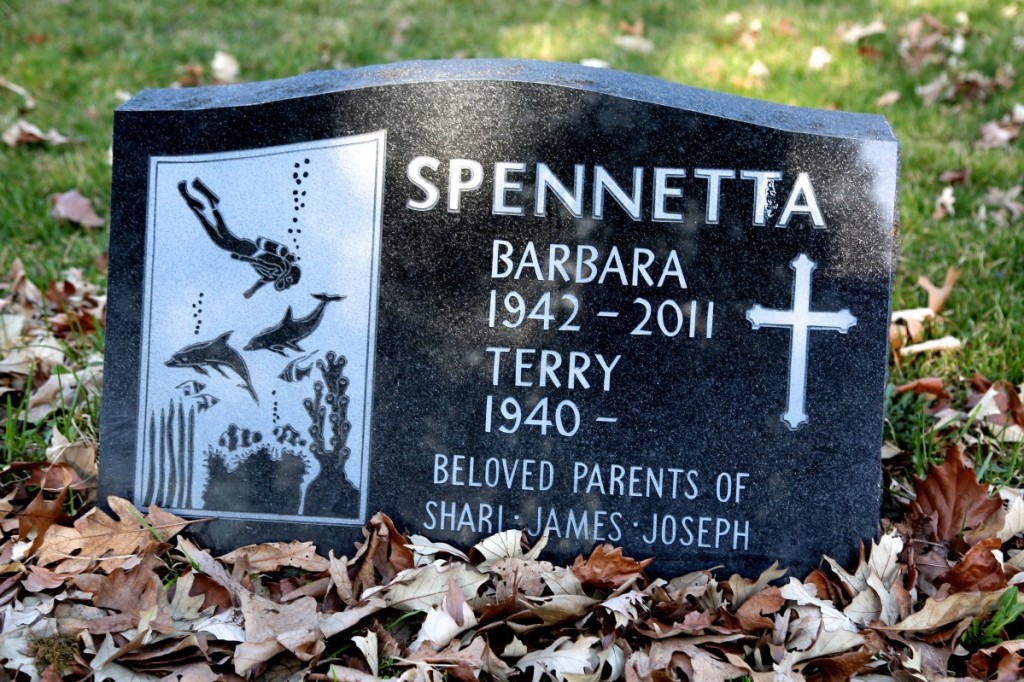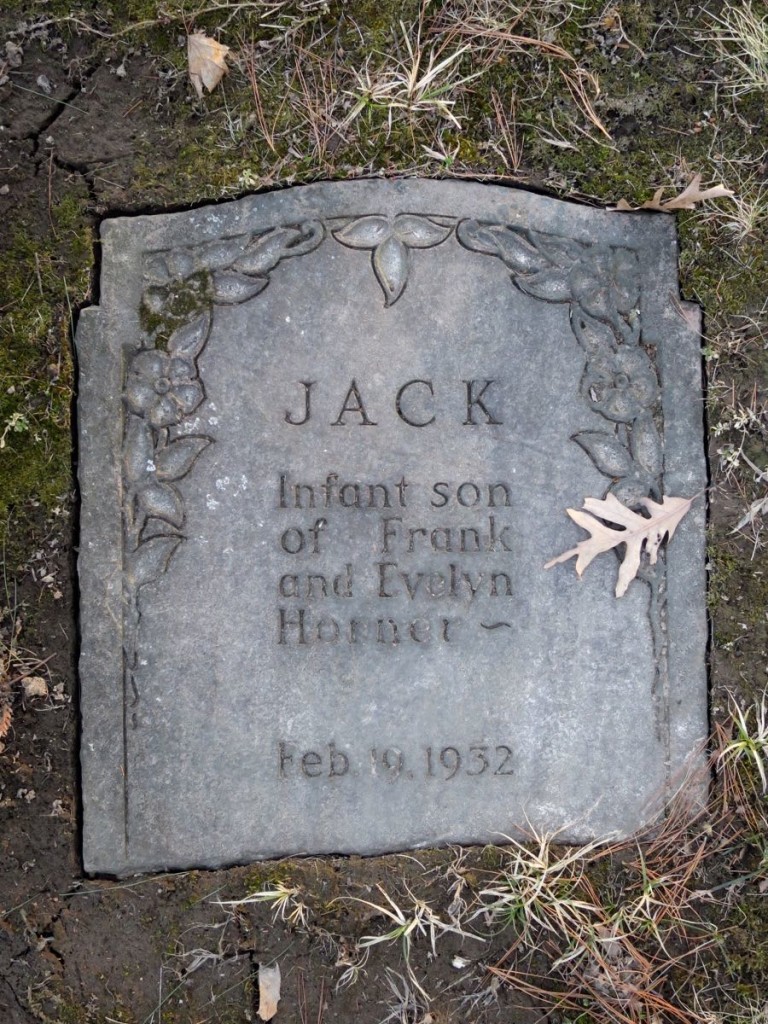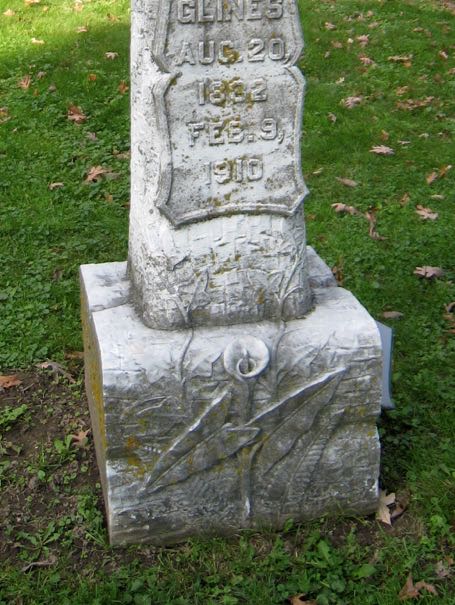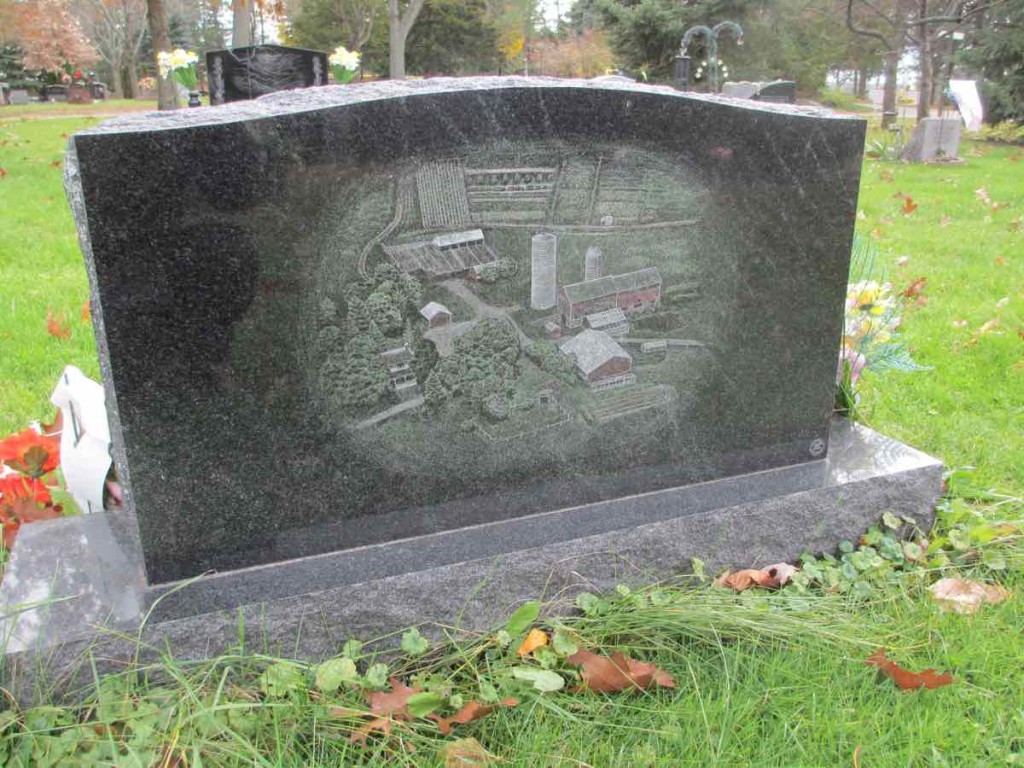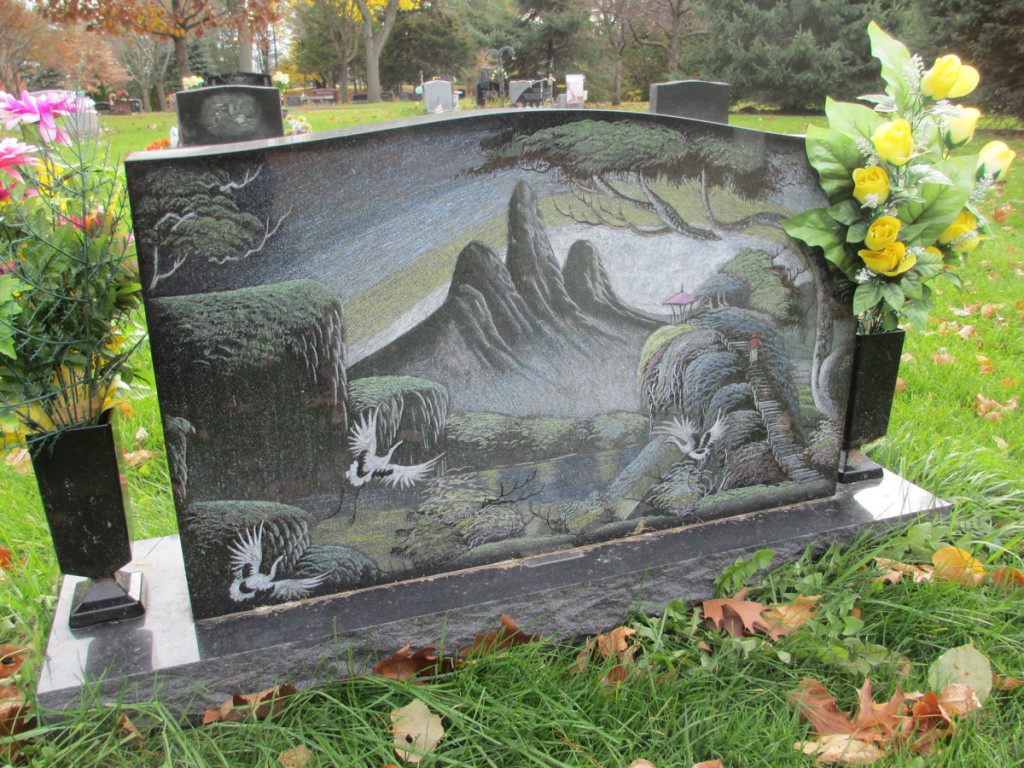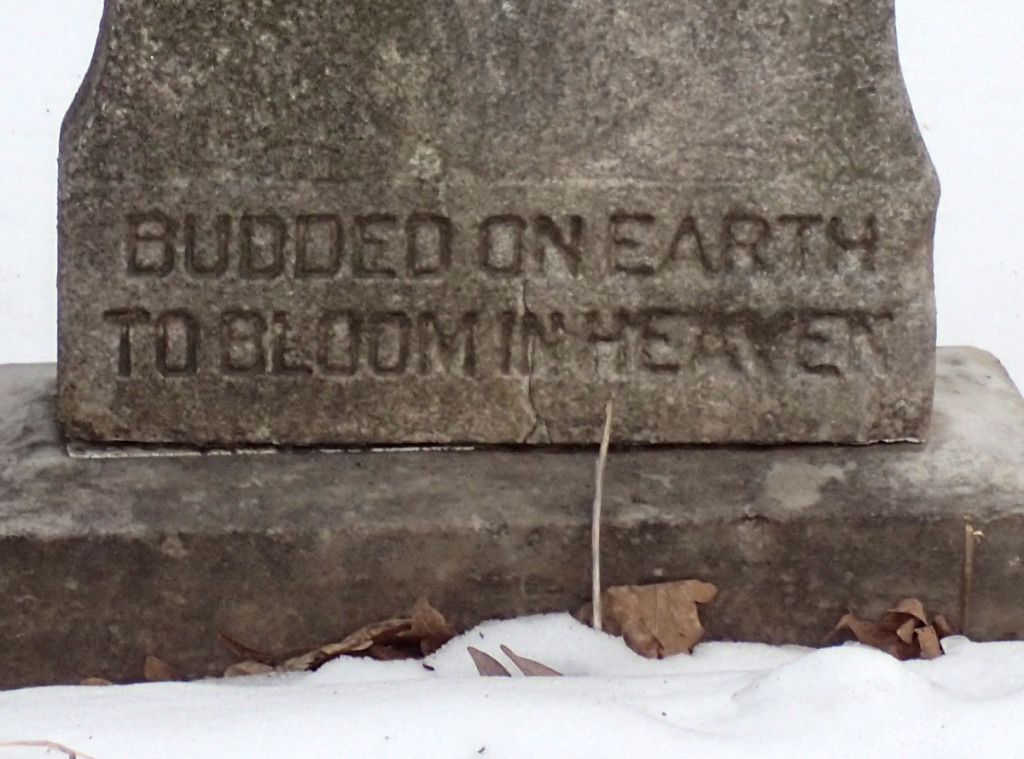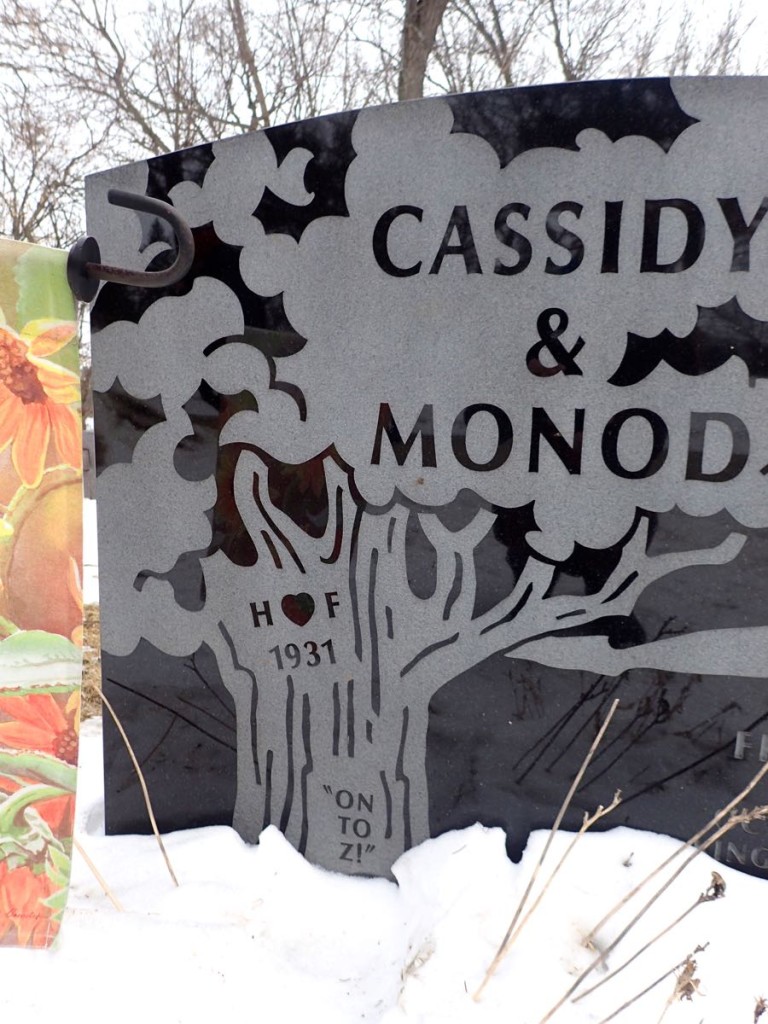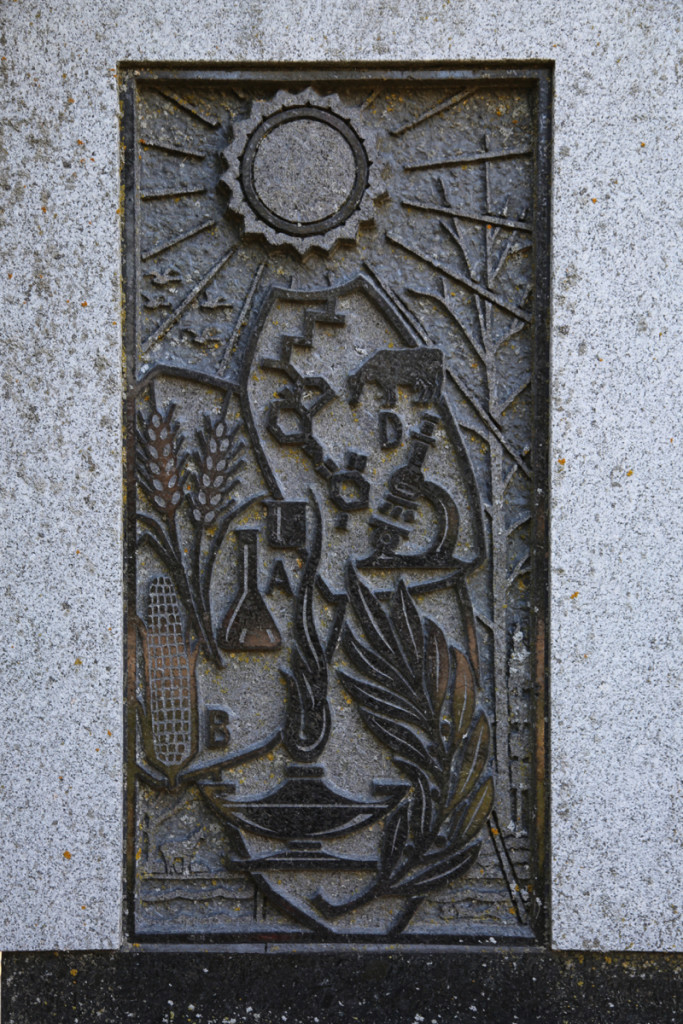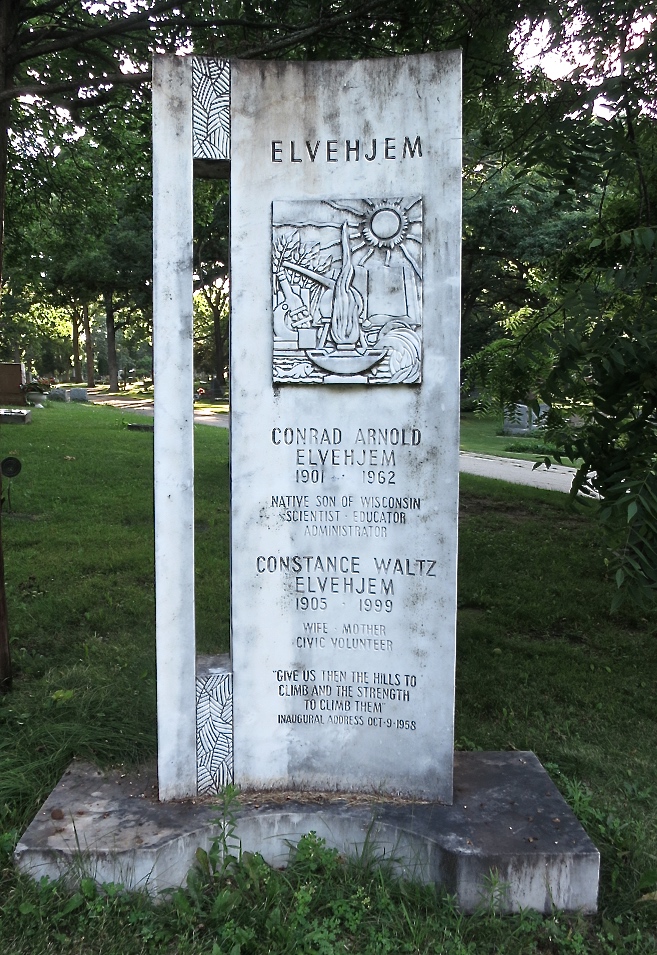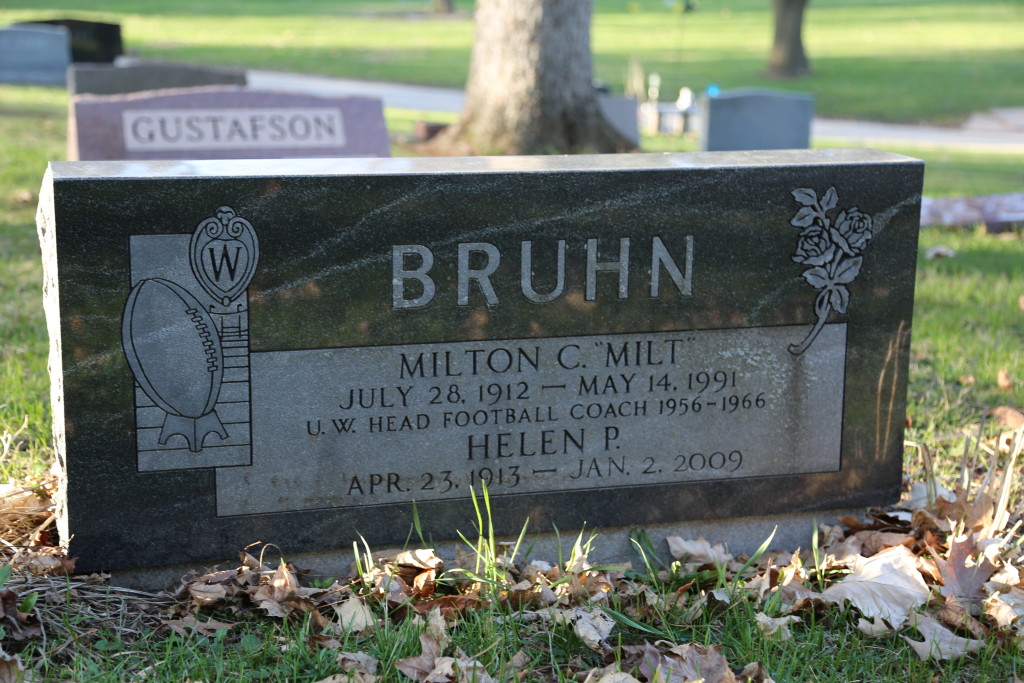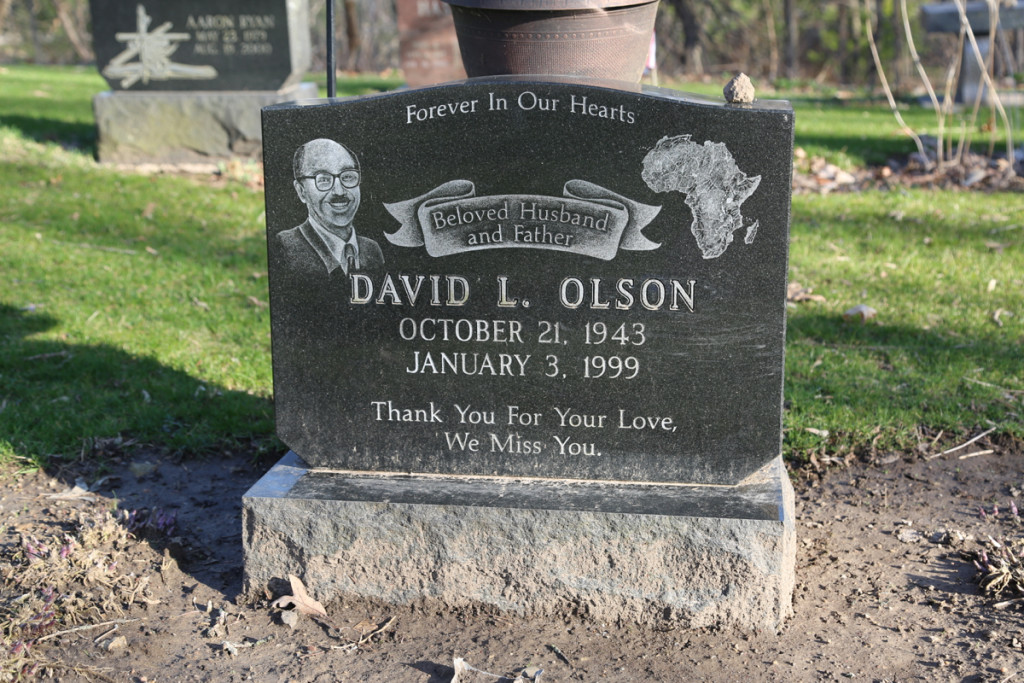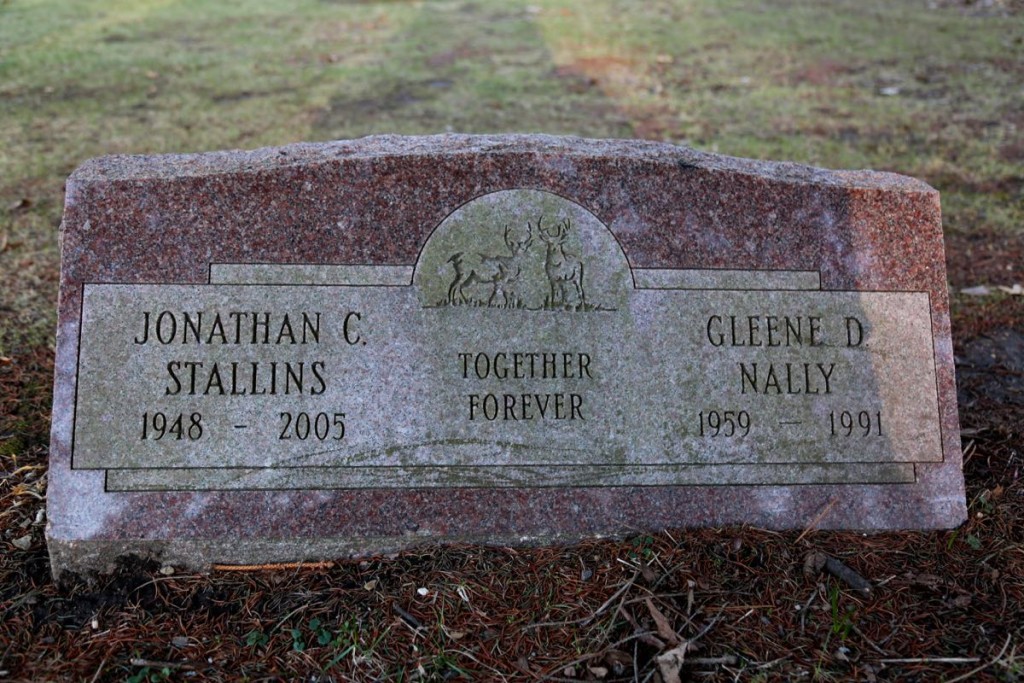SAYING IT WITH PICTURES
You may be struck, as you walk around Forest Hill Cemetery, by the number of gravestones bearing personal images. In many cases, memories of daily life have been chosen as memorials: ice skates; local wildlife such as sandhill cranes; pets; playing cards; drum sticks; Yoda; a microscope; golf clubs and other sports imagery. Even the University of Wisconsin’s famous mascot, Bucky Badger, features on several stones throughout the cemetery.
SAYING IT WITH FlOWERS
In the Victorian era, during which Forest Hill Cemetery was first created, a different way of leaving personal messages was popular; the language of flowers. Among the older stones at Forest Hill, you may see traces of these messages left in carved stone; lilies, roses and morning glory, among others. Calla lilies seem the more common of the lilies, and may symbolize beauty, while morning glory and roses have both been used to convey a wide variety of messages. Below, it seems likely that the species roses (wild roses, untouched by horticulture) depicted on the grave of Jack Horner, an infant baby boy, may have represented purity.
This memorial depicting a calla lily, a rose in full bloom, and morning glory among other flowers, may have signified beauty, innocence and youth. ((Cooper, G. (2009). Stories told in stone: cemetery iconology: a manual for genealogy research. Louisville, Motes Books.)) By the late nineteenth-century, new stone cutting machines allowed the mass production of pre-carved stones with everything but the name and dates finished, making gravestones far less personal. ((Sloane, D. C. (2005). Roadside Shrine and Granite Sketches: Diversifying the Vernacular Landscape of Memory. Vernacular Architecture Form))
SAYING IT WITH NEW TECHNOLOGIES
Just as stone cutting machines were responsible for the mass production of “unoriginal stones” ((Ibid.)) in the late nineteenth-century, advancements in technology have since made memorial design faster, cheaper and far more adaptable. Computer-aided design and hand techniques are both used to make contemporary gravestones; drawings might be carved into the stone using a diamond tip, with color painted on by hand if desired. Rubber stencils are also used, but must be custom made, cut using computer-controlled knives. Finer details can be added to the stencils by laser and ultraviolet light. These techniques make almost any design, shape, or color possible. ((Schwartz, N. (1992). Trend in Gravestones is Highly Personal: It’s ‘Cemetery Art’ – Monuments feature guitars, teddy bears, photographs, even a life-size Mercedes. The Wall Street Journal. New York, New York, and Sloane, D. C. (2005). Roadside Shrine and Granite Sketches: Diversifying the Vernacular Landscape of Memory. Vernacular Architecture Form))
For further discussion of the history of stone cutting, and the changing uses of stone for memorials, see the Stones page of this website.
SAYING IT WITH WORDS
These new techniques have not only made personal imagery possible, but also personal words. A 1992 survey of American memorial makers confirmed that designers and stone cutters from across the country had experienced a significant move towards people preferring personal monuments: “We haven’t used [“Rest in Peace”] in 10 years, not once,” said one fourth-generation monument maker working in the Illinois area. ((Schwartz, N. (1992). Trend in Gravestones is Highly Personal: It’s ‘Cemetery Art’ – Monuments feature guitars, teddy bears, photographs, even a life-size Mercedes. The Wall Street Journal. New York, New York.)) Inscriptions ranging from the very traditional, to the highly personal, can be found throughout Forest Hill Cemetery.
OCCUPATIONS
Harry Steenbock (1886-1967) worked as a Professor and biochemist at the University of Wisconsin-Madison. He is best known for his groundbreaking vitamin D research, which helped to eliminate rickets in America. The panorama of symbols on the Steenbock memorial are telling of this legacy. A cow and some wheat hint at the dairy farms and cereal producers he was able to help, showing them how to enhance their products with vitamin D. Steenbock was also one of the earliest people to discover vitamin A and B. The corn and the ‘B’ in this memorial are reminders of the vitamin B deficiency that can arise from a largely corn-based diet.
Conrad A. Elvehjem (1901-1962) spent his entire graduate student and professional career at the University of Wisconsin-Madison, and served as president to the university between 1958-1962. As a biochemist he was responsible for the isolation of niacin (vitamin B3), which helped to lead to a cure for Pellagra; lesions and a heightened sensitivity to sunlight caused by a vitamin B deficiency. The sun and the microscope, seen here depicted on his memorial, hint at this work.
Milton C. “Milt” Bruhn was the Head Coach for the University of Wisconsin Badgers football team between 1956 and 1966, overseeing two Rose Bowl appearances before his death in 1991. His own career as a football and baseball player while he was a student in Minnesota saw many victories, including three Big Ten Conference championships. His memorial depicts two roses, in addition to a football and the University of Wisconsin-Madison’s emblem.
PORTRAITS of loved ones are a very direct way to evoke personal memorial. Among the many gravestones depicting portraits at Forest Hill, they are perhaps most prolific among Hmong memorials. For more information about Hmong memorials, see Symbols: Inherited Identity, and Ethnic and Cultural Identity and the Rituals pages of this website. Below are a few other notable examples.
John “Snowball” Riley, who spent most of his life as a street character in Madison, was regarded with much affection by the local community. After arriving, somewhat mysteriously, by train in the 1920’s, he was most seen on State Street. He was called “the gentleman professor of philosophy and window washing” by the Wisconsin State Journal, and often wore the white boots that earned him his nickname. When he died in 1975, two friends paid for a memorial stone etched with his portrait. One anonymous tribute paid testament to his cheerful disposition: “He was always humming a song as he stood in the back of the bus with the rest of us… but it was the amount of pens he carried in his bibbed overalls pockets that drew my attention. He always had a smile about him.” ((Anonymous tribute at citydictionary.com, accessed April 2015))
David L. Olson spent eighteen years working in Africa, first with the Peace Corps, and thereafter with a variety of other companies in African countries, including the U.S. Department of Agriculture and the World Bank. Even after moving to Washington D.C. in the early 1980’s, Olson maintained close links, returning to Africa many times. ((Obituary information obtained from findagrave.com, accessed April 2015))
Jonathan Clay Stallins and his partner, Gleene Nally, both of Arkansas, died of AIDS, 1991 and 2005 respectively. Stallins was a prominent member of the Madison AIDS Support Network (now AIDS Network Madison), and was outspoken on issues concerning AIDS as a media figure and educator. ((Information obtained from host.madison.com, news and obituaries, and from findagrave.com, both accessed April 2015))
Traditionally, deer have been used to symbolize piety and the stag, in particular, has been used as a symbol to represent solitude and contemplation. Associations have also been made with St. Eustace, who is believed to have lived in the second century, and was baptized after an encounter with a white stag bearing a cross. ((Keister, D. (2004). Stories in Stone: A Field Guide to Cemetery Symbolism and Iconography. Gibbs Smith)) However, the presence of the two stags are notable on the Stallins / Nally memorial and, perhaps especially in the context of Wisconsin, it is difficult to entirely ignore an association of the beautiful and the hunted, taken in their prime.
Back to Top | Symbols Main Page | Sacred | Collective | Inherited
